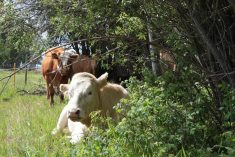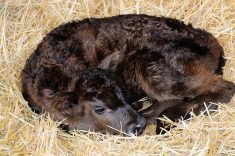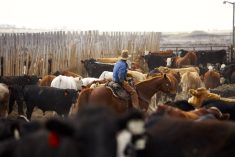Leptospirosis is rare in Western Canada. The three large pharma companies have leptospirosis vaccines, usually in combination with the standard five-way viral vaccines. They do not sell many doses, which indicates low frequency.
In veterinary practice, we suspect it when we see bloody diarrhea or a high open rate or abortions. Leptospirosis titres are often found when testing bulls for AI entry. The titres mean there has been exposure on the farm but not necessarily anything clinical.
Veterinarians have often suspected that exposure comes from wildlife, and this seems to wax and wane from year to year.
Read Also

Exploring agriculture from coast to coast in 2025
Columnist Lee Hart looks back on what he has learned from farmers and ranchers from coast to coast in 2025.
A fair amount of clinical lepto is seen in Eastern Canada and the eastern U.S., especially in dairy cattle. The vaccine is a killed bacterium and a booster shot at the appropriate time is necessary for protection. There are many serotypes of lepto. Pomona and hardjo are the most prevalent and important ones in cattle, and probably the most pathogenic.
Clinically, leptospirosis presents as sick animals with bloody urine. Several other things cause bloody urine, such as low phosphorus, pyelonephritis and redwater disease. Some types of clover can even give urine a red colour.
With abortions in later pregnancy or even a very high open rate, the standard reproductive diseases such as vibrio, IBR, BVD and trichomoniasis need to be ruled out. Mycotoxins and even brucellosis must also be considered. There are various charts to help with differentiation of abortions but diagnosis may be made on the fetus and if not, blood samples showing high titres can be suggestive.
Treatment
Bulls entering AI programs should be checked for lepto titres and only very low amounts are acceptable. Bulls are rarely clinical. It can be frustrating for the owner when a very promising herd sire goes down to lepto titres. Semen can be collected for Canadian use but lepto titres on bulls affect the ability to put up semen for U.S. export.
Keep wildlife away
We often see lepto titres rise and fall, and in my now-long career in veterinary medicine, I have never had a confirmed clinical case. Have I missed it or are levels too low to be clinical? Others have found very high titres in herds with reproductive failure as high as 50 per cent.
Lepto should always be on our radar when it comes to reproductive failure or clinical cases of bloody urine but there are many other causes of these signs.
I once thought leptospirosis was a figment of our imagination but was quickly corrected. It is clinical in Eastern Canada, and it causes significant losses in other countries. Prevention involves vaccination in combination with viral respiratory vaccines.
Leptospirosis will continue to be a mystery disease in Canada. Your local veterinarian is the best one to know whether you should include it in a vaccination protocol.
















